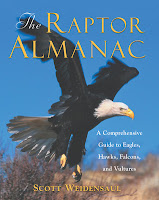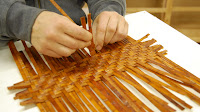This is the first of three books that Lake Superior Magazine
asked me to review – three books of poetry.
So the question is – how do you review poetry? I do not write it, I tried, when I was in
college. I made rhyming verses because
my English professor said it would give me writing discipline to conform to
meter and rhyme. Then Whitman set me free to ramble and I did, but prose was my
medium and not just prose, but non-fiction.
So I review these tentatively as a person, who loves books and loves
what great writers do with words; I explore poetry annually, digging in to
great poets, which the Northland seems to produce in such wonderful abundance
and quality. I love the works of Louis
Jenkins and Konnie Wanek, but judging poetry is difficult.
A poem is a picture and a rhythm – a song without music and
images in abstract with words. I have to
read the first few lines over and over to discover their sound and listen to
the words to get the image. Which brings
me to Barton Sutter who lives in Duluth and has become an important name in
poetry with numerous awards and recognition: others have judged his merit so I
can only report how I react personally to the poetry in this collection.
The poetry is compiled in sections – chapters if it was
prose - and the poems are linked in a loose set of themes. The first section examines some of darker
sides of people Barton has encountered and the conditions that challenge our
perspectives. He captures the lonely
frustration of dying among the candy stripers and piped in rock music: “Like
earmuffs to my head, And stumbled from the house To runrun, runaway.” He remembers the lumberman, Nils, who is moved
by the discovery of a nest in a tree he has cut. It is not the birds, but the human emotion
that causes Nils to tie the tree upright to a still uncut tree in hopes the
parents will return – “The frightened parents must have fled, But I like
thinking how Nils tried.”
His lines are clever, often humorous and always thought
provoking – “Father, Holy Ghost, and Son Were peanuts in a single shell” and we
glimpse perception in lines like: “A five-year-old doesn’t judge but
sees.” We can picture the farmer, a roughhewn
man who extends sympathy to a child stung by a hornet. “I see his trembling,
farm-thick fingers Plastering his young son’s brow With a dripping lump of cool
blue clay To take the hornet’s sting away.”
Part 2 is a reflection on a sense of place – “But nothing
says north like a white pine Unless it’s a maple gone red to maroon.” He captures the frustration I felt just the
day before reading his ode on the construction on Highway 1. We hate the fact that we can no longer see
the river we crossed: “Our looks now boomerang off a blank wall, The highway
turned hallway, one more Aesthetic atrocity committed, one more Beauty spot
blotted out.” Amen. Instead he celebrates nature and the
wonderful way it celebrates and supports diversity, “To work together for the
great good of green.”
And we laughed as I read aloud Those Finnish Folk: “Pioneered by people awful fond of
failure.” “They believe in Sauna,
Nudity, and Coffee.” The tear jerker is
an ode to his dog – those animals evolved to be our best friends and our worst
hurt.
Section three is about the Bush administration and did my
liberal heart good! Section four was
filled with a collection of images and topics, but if there was a central theme
I was not able to catch it. Section five is about books and writing – an
assortment of whims, loves, and relationships between reader, writer, and the
printed word. “So the years passed. It might take him all day to write one
sentence. If he published it, by God, he
meant it.”
In section six Barton explores his love of his wife, her
bravery, her loveliness and her absence.
In the final poem With You in
Spain you can feel the writer walking the garden daily taking in the
flowers and trees that they have planted and rejoicing in their beauty while
noticing that it is not the same when she is in Spain. The introspection of this journey through
time and garden ends with a soliloquy on the place that is their place and what
it will be like when both are dead and someone else owns this precious
place. “I tried to tell myself When we
are dead and buried It will only be As if we’ve gone to Spain.” But it will not be that simple “Let me try to
make this plain. Imagine you had seen
Apple petals drifting down Like manna on the lawn, But we were gone.”
The final section is one epic poem – Reindeer Camps – that takes us far north and puts us where we have
never been and probably will never be. It
is a journey in to timelessness – it brings forth the metaphos of age and place
in the barren lands of Siberia. – “And
seldom settle anywhere For longer than a month or so. To overgraze the grass and moss Would be a
grave mistake.” There is a lesson there
for all mankind and our voracious consumption. And this plain landscape is a
place to reflect on human space and place – “Taiga, taiga, world of white, Home
to sable, black as night, What mere human mind or eye Can take in your immensity.”
It is an excellent collection and a philosophic poetry
tinged with humor and insight.









